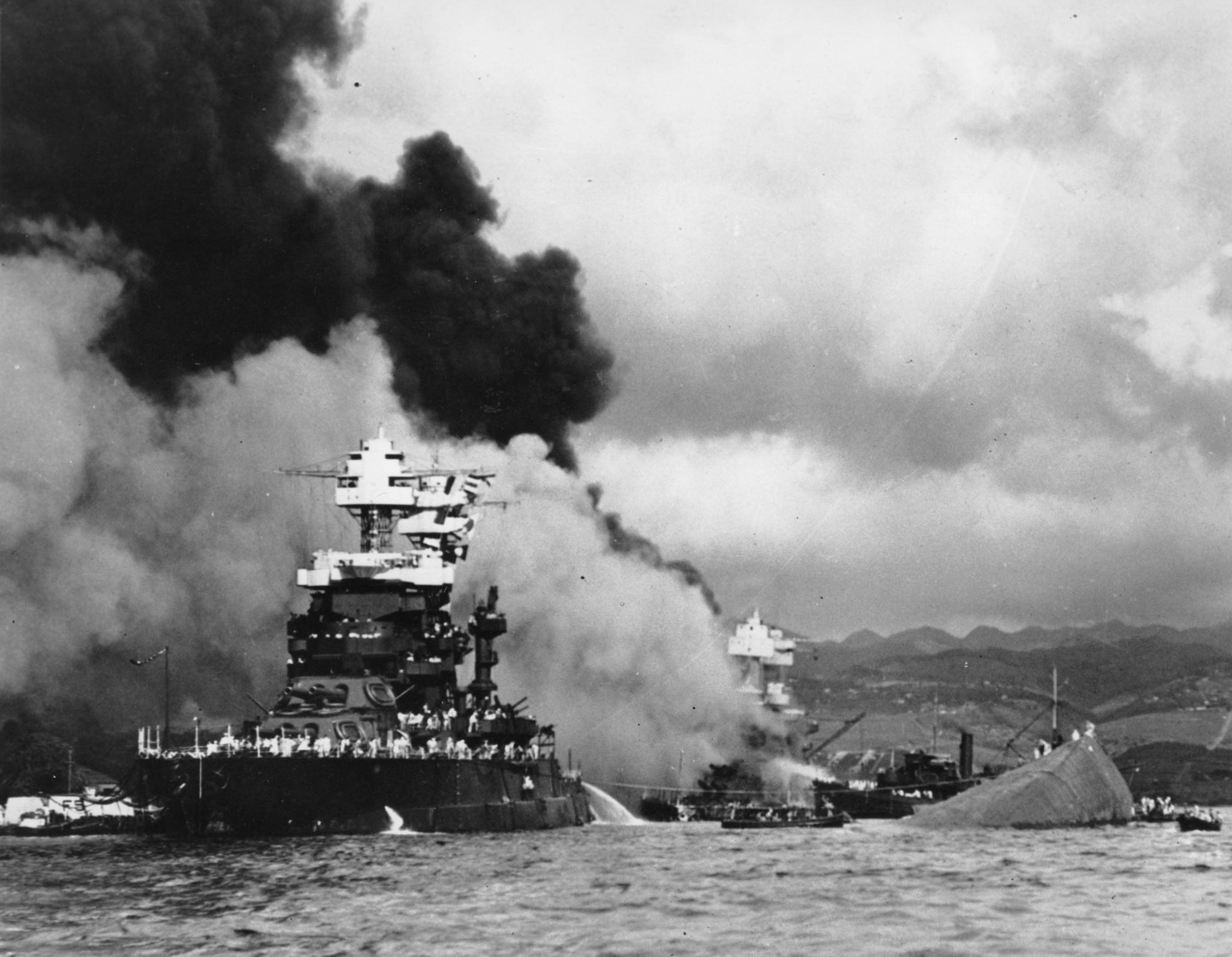LAS VEGAS — Three Las Vegas-area men, now in their mid-90s, are marking the 75th anniversary of the Japanese attack on Pearl Harbor with memories of their survival and hope that lessons learned in the war that followed will outlive them.
"After World War II and all that the country and ourselves have been through, I thought we had accomplished a peaceful world, and peace for our nation," Lenoard Nielsen, 94, told the Las Vegas Review-Journal. "Today, 75 years later, I question any part of that being the truth."
Ed Hall, one of the last presidents of the local Pearl Harbor Survivors Association before it disbanded, said annual member visits to Las Vegas-area schools ended a few years ago.
While roughly 20,000 U.S. military personnel survived the attack on Pearl Harbor, Nielsen and Hall, 93, are among the last few living in the Las Vegas area.
They're too frail to travel to be among the 200 survivors gathering Wednesday at 75th commemoration events in Hawaii.
The men will remember friends they lost and the tragedy they experienced on Dec. 7, 1941 — "a date which will live in infamy," as President Franklin D. Roosevelt called it when he asked Congress to declare war on Japan.
Richard Hackett, another veteran who now lives in Henderson, was a 20-year-old sailor that Sunday morning outside the Naval Station barracks in Honolulu when a Japanese plane flew so low he could see the pilot's face.
"I thought he was lost," he said. "We didn't know what was going on until one of the officers told us Pearl was under attack."
Nielsen, then a 19-year-old sailor, recalls watching in disbelief from the deck of a hospital ship as swarms of Japanese warplanes swooped down and unleashed bombs and torpedoes. He saw the final bomb hit his former ship, the USS Arizona, engulfing it in flames before it sank.
"We couldn't come to realize what was really happening. It was such a terrible thing before our eyes," he said.
Hall, an 18-year-old Army Air Corps soldier at the time, stood outside a mess hall at nearby Hickam Field while a Japanese aircraft flew at him, its machine guns kicking up chunks of asphalt.
"I'm staring at him in awe, not believing what I'm seeing," he recalled. "He couldn't have been more than 25 to 30 feet off the ground. He had to pull up to miss the building and telephone wires."

FILE - In this Dec. 7, 1941 file photo, part of the hull of the capsized USS Oklahoma is seen at right as the battleship USS West Virginia, center, begins to sink after suffering heavy damage, while the USS Maryland, left, is still afloat in Pearl Harbor, Oahu, Hawaii.
Photo Credit: Navy via AP
The greatest number of casualties occurred on Battleship Row, where most of the Pacific Fleet was moored. Of the 2,403 men and women who died in the attack, almost half — 1,177 — were on the USS Arizona. Among the 335 on board who survived was Clarendon Hetrick, who lived to 92 before dying in Las Vegas last April. He was among the last seven USS Arizona survivors.
Nielsen, an apprentice seaman from Salina, Utah, was aboard the USS Solace hospital ship recovering from an emergency appendectomy. He had been assigned to the USS Arizona out of boot camp, but was granted a transfer to serve with a childhood friend aboard a heavy cruiser, the USS Pensacola.
That ship left Pearl Harbor on Nov. 29, 1941, to take Marines to Midway Island. Nielsen was too sick to make the trip.
Eight days later, he joined other volunteers rescuing sailors from a fiery oil slick created by the attack.
"We had a hard time making our way through the oil," he said, shaking with emotion as he described hauling badly burned and injured people into longboats and gigs.
Read about awards and decorations presented to troops who were at Pearl Harbor when it was attacked by clicking on Hall of Valorand searching for Pearl Harbor.
Hackett, now 95, was an electrician's mate from Madison, Wisconsin. He was on shore patrol, where his first assignment was to roust servicemen from whorehouses in Honolulu to get them back to ships and duty stations.
Later, Hackett was sent to the USS Utah to recover live ammunition for reuse.
"It was laying on its side," he said of the battleship.
At Hickam Field, Hall — an Army private from Greenwood, South Carolina — was scrubbing a frying pan when he heard an explosion.
"I went to the back door, looked up the street and Hangars 7 and 9 were blowing up," he said, and "all these guys running out" of Hangars 2 and 4.
He hustled to the motor pool and drove off in a pickup before being flagged down by a medic.
They spent "quite a few hours" taking wounded soldiers to medical facilities and recovering the dead.
"It was a terrible day," he said.



